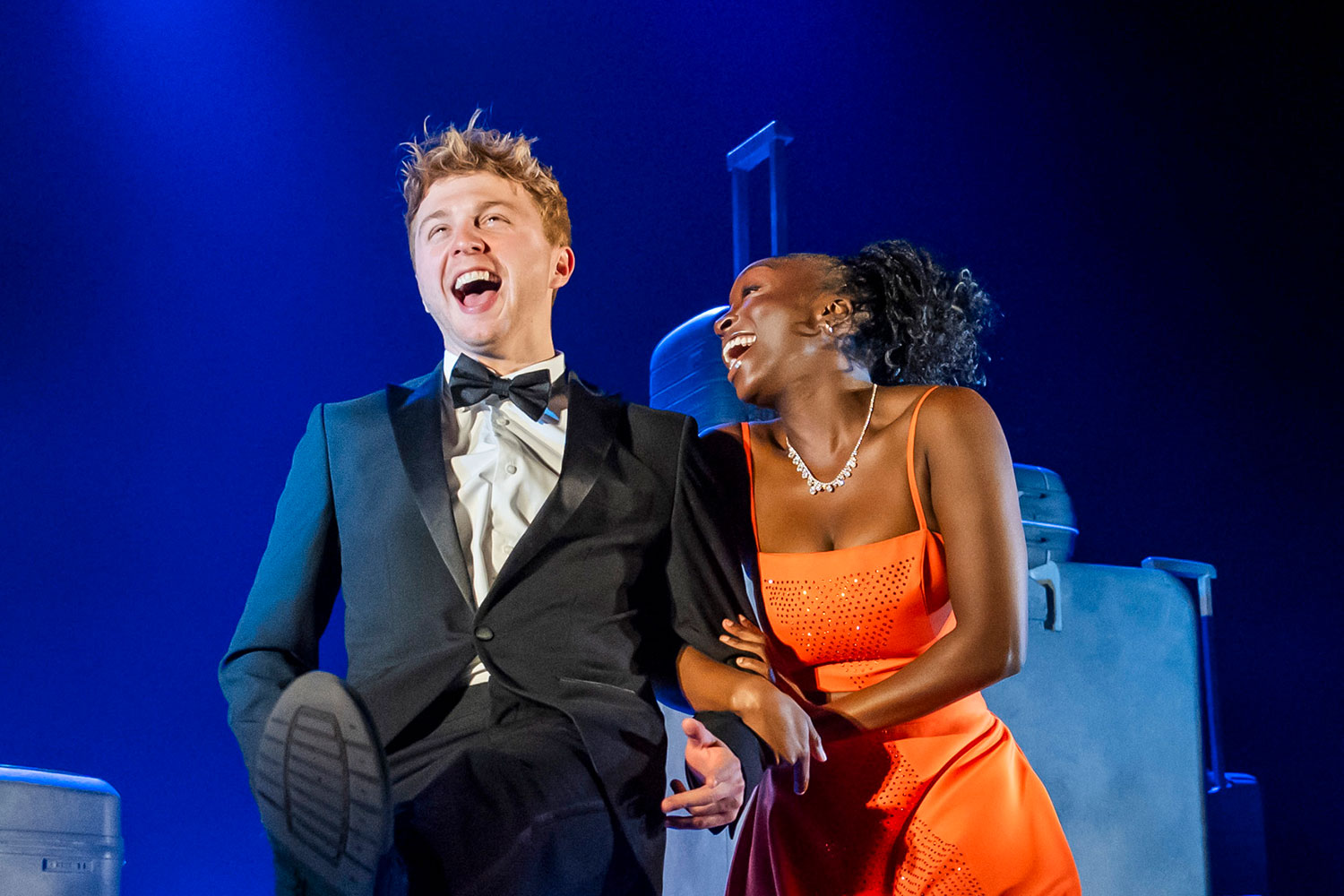Seven for a Secret (tour – Brighton, Theatre Royal)
It may be celebrating reaching the ripe old age of 85, but the Rambert Dance Company is as fresh and vibrant in 2012 as it has always been. Presenting a triple bill which includes the title piece of Seven for a Secret, plus a varying combination from the current repertoire, the company do exactly what it does best –presenting challenging contemporary dance in the most accessible way.
The first piece is Roses, in which five male and five female dancers couple up, with each couple taking turns to hold centre stage while the remaining pairs stand motionless behind. The movements, originally choreographed by Paul Taylor and now reconstructed by Richard Chen See, are intricate and represent all too well the complexities of modern relationships.
Half-way through the piece a sixth couple is introduced. Their white costumes are a stark contrast to the black and grey garb of the other couples, and they seem to symbolise a less complicated and more serene partnership. Wagner’s “Siegfried idyll” and Baermann’s “Adagio for clarinet and strings” are perfect at providing the musical contrast in the piece.
The title piece follows with the curtain opening to reveal a forest scene and a canopy of willowy branches which sway gently above the dancers who, with echoes of childhood pastimes, launch into the most energetic piece of the night. With the help of their scientist in residence, Nicola S Clayton, the company examine the psychology of childhood behaviour as they stage representations of tea parties, boxing, pillow fighting and even stilt-walking on tin cans.
Movements echo fondly those which one might see in the garden or playground as children explore and learn through play. Stephen McNeff’s comic-sounding adaptation of “L’enfant et les sortilèges” by Ravel works very well with the dancers’ childlike slipping, sliding and skipping; together they create a tremendously enjoyable piece.
In stark contrast is the third piece Elysian Fields, inspired by the works of Tennessee Williams. This performance is in a much more adult vein with sensuality and sexuality forming the main theme. Danced in a circular arena, surrounded by chairs ranging in size from the average to enormously oversized versions, the performers recite lines and then interpret those lines in dance. At times both violent and harrowing, the energy and emotion exuded ensures that the audience reaction is immediate and rapturous.
With such a wonderful ensemble it is probably unfair to single out just one dancer but, having said that, Dane Hurst, who appears in the first two pieces, gives such an accomplished performance with clear lines and dramatic movements that he does merit a special mention. He stands out against some of the other males in the company whose sloppy extensions are the only thing that spoil an otherwise fantastic evening of contemporary dance.










